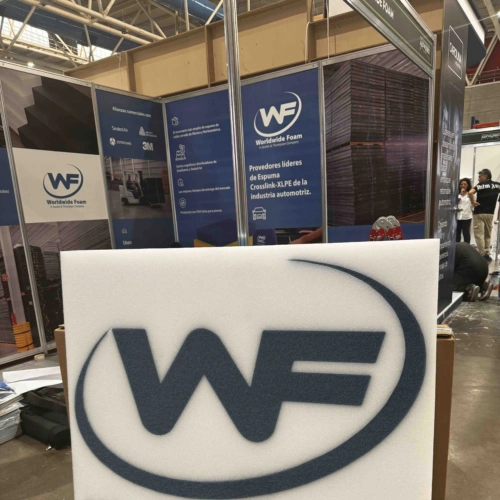| September 21, 2023
In order for a product to reach its ultimate consumer, it must navigate a series of intricate processes, encompassing manufacturing, packaging, and exportation. Throughout this journey, packaging assumes a pivotal role.
Nevertheless, it's important to understand that there exists a multitude of packaging options, and the selection of the appropriate export packaging hinges on both the nature of the product and the specific objectives of the company.
This article delves into the various categories of export packaging and underscores the indispensable role played by closed-cell polyethylene foam, supplied by Worldwide Foam, within a wide spectrum of American industries.
Types of export packaging
International trade stands as a cornerstone of the global economy. Businesses seek opportunities beyond their borders to expand their markets and boost profits. Yet, to ensure the success of these exports, it's imperative to employ proper packaging that safeguards products during transit and adheres to international regulations.
Product packaging
Primary packaging, the packaging closest to the product, primarily serves to shield it directly. It may take the form of a box, bottle, bag, or another type of product container. In many export scenarios, primary packaging must align with the specific regulations of the destination country, including labeling requirements and approved materials.
Unit packaging
Secondary packaging consolidates multiple individual products into larger units for convenient handling and distribution. These boxes or packages must not only safeguard the primary packaging but also facilitate product identification and access without causing damage.
Transport packaging
Tertiary packaging, often referred to as transport or shipping packaging, serves as the outermost layer protecting the products. This involves the use of substantial structures reinforced both internally and externally with closed-cell polyethylene foam to provide added security for the contents, both inside and out.
The significance of closed-cell polyethylene foam
In the realm of export packaging, closed-cell polyethylene foam has evolved into an indispensable material. Supplied by Worldwide Foam, this foam offers a range of advantages that render it the perfect choice for safeguarding products in transit. Below, we delve into some key industries that heavily rely on it and the reasons behind their preference.
Impact absorption
Closed-cell polyethylene foam boasts a remarkable ability to absorb impacts. This quality renders it exceptionally well-suited for safeguarding fragile or delicate items during transportation, including electronics, medical devices, and precision machine parts.
Thermal insulation
In certain industries, maintaining a consistent temperature proves absolutely critical. Closed-cell polyethylene foam excels as a thermal insulator, making it invaluable for the transport of temperature-sensitive goods, such as pharmaceuticals and perishable foods.
Water resilience
Adverse weather conditions or the rigors of shipping can expose products to moisture-related damage. Closed-cell polyethylene foam exhibits impressive water resistance, shielding products from moisture and preventing potential harm.
Featherweight yet mighty
Closed-cell polyethylene foam, despite its exceptional protective qualities, comes with a surprising featherweight advantage. This not only cuts down on shipping expenses but also simplifies packaging handling, all while maintaining top-tier internal protection.
Meeting international standards
In the realm of exporting goods, adhering to international packaging and shipping regulations is paramount. Closed-cell polyethylene foam aligns seamlessly with a multitude of regulations and standards, ensuring a seamless transportation process.
Diverse industries embracing closed-cell polyethylene foam
The adaptability of closed-cell polyethylene foam in various export packaging scenarios renders it indispensable across a broad spectrum of industries engaged in global trade. Summarizing the Use of Closed-Cell Polyethylene Foam in Various Industries Listing each application can be quite intricate, as closed-cell polyethylene foam finds versatile use across multiple sectors. However, here's a glimpse of how it benefits some key industries:
Electronics industry
Polyethylene foam shields delicate electronic components from shocks and static electricity during transport.Its unique composition provides electrical insulation, ensuring safety and aesthetics.
Pharmaceutical industry
Temperature-sensitive drugs and pharmaceuticals benefit from the foam's thermal insulation, safeguarding them during transit. Its water-resistant properties prevent moisture from penetrating the packaging.
Automotive industry
Closed-cell polyethylene foam plays a vital role in the automotive sector, ensuring the safe transport of parts and components. Many automotive companies also manufacture parts from this material, enhancing safety and reducing noise during motion.
Food industry
Approved by the FDA, closed-cell polyethylene foam is a safe choice. It does not generate or release particles that could harm perishable products like fruits, vegetables, and dairy, preserving their freshness and safety during export.
Agricultural sector
Polyethylene foam delivers essential impact protection to heavy machinery and industrial components. It serves as a vital shield, preventing machinery from making direct contact or colliding with crates and the materials they contain.
Diverse forms of export packaging play an integral role in the triumph of companies engaged in international trade. Ranging from primary to tertiary, these packaging types collaborate harmoniously to ensure product safety during transit.
The closed-cell polyethylene foam supplied by Worldwide Foam has emerged as a fundamental component across various industries, owing to its protective attributes and its ability to meet international regulations.
In our increasingly interconnected global landscape, investing in high-quality packaging is a pivotal factor for achieving success in the realm of B2B commerce. This reality cannot be overstated.
Worldwide Foam

We are leaders in the supply of closed cell polyethylene foam in Mexico. We support various industries by offering a wide range of products and complementary services.










